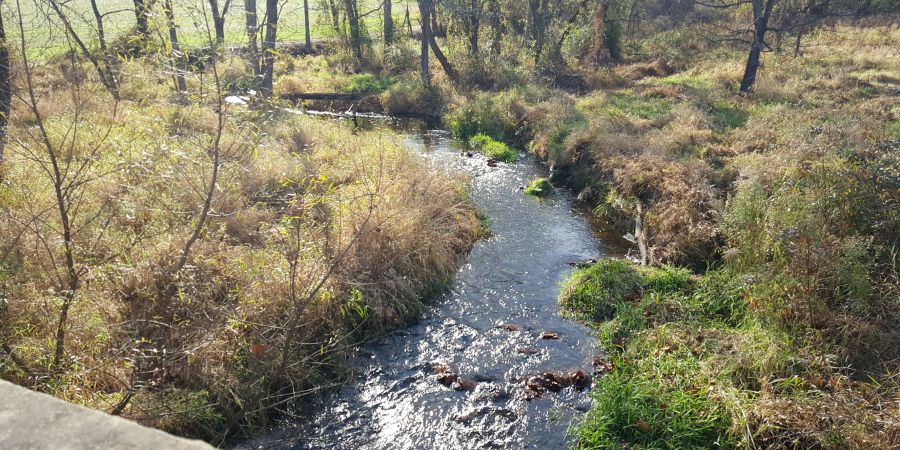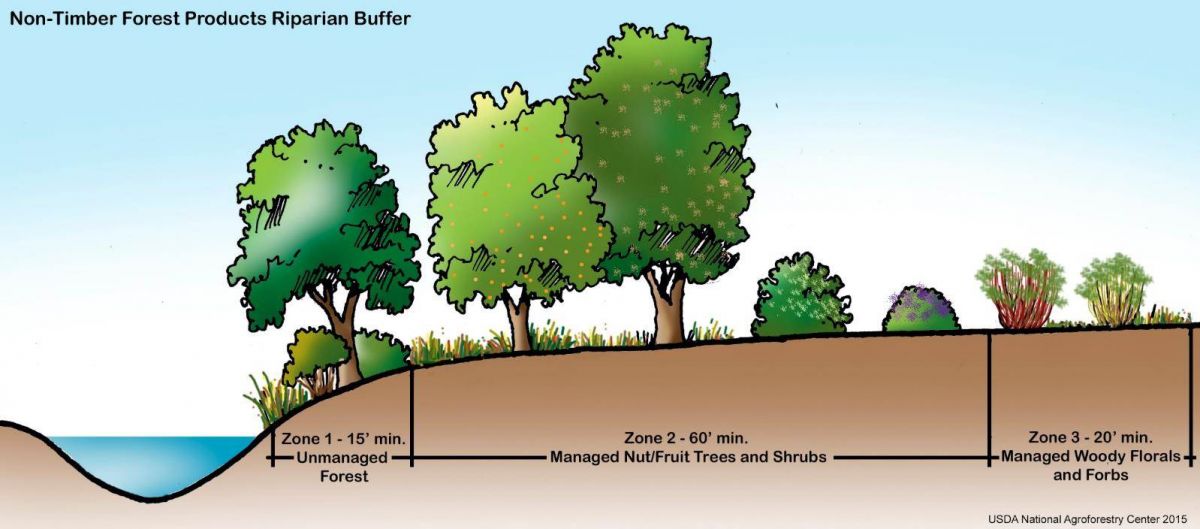Blog

Can streamside buffers produce income while protecting water?
About a quarter of the land in the Delaware River Basin is farmland. Many farms in the basin are small family operations — the average size of the region’s 14,000 farms is just over 100 acres. The smaller the farm, the more valuable each individual acre is to the overall operation. However, farms located along streams are often asked to sacrifice production on valuable land to plant streamside forest buffers that protect the water from runoff from their fields. These parts of a farm are often less productive than fields that are farther away from the stream, but sometimes a farmer needs to cultivate them, even at a lesser profit.
Is there a way for streamside buffers to protect streams while still producing revenue for farmers?
Robust scientific evidence from decades of research demonstrates that streamside buffers are effective in preventing agricultural runoff from polluting streams. However, planting them is expensive. To offset costs, many grant programs support farmers to plant forested buffers along streams to mitigate this source of pollution. Slowly but surely, more farmers are planting and restoring streamside buffers across the country. But how can we accelerate the pace in the face of limited grant funding and resistance from farmers and landowners?
One potential solution is working riparian buffers that protect water quality while producing revenue for the farmer.

Given the William Penn Foundation’s focus on addressing agricultural runoff and its threat to water quality, we partnered with the Sustainable Agriculture and Food System Funders to host a webinar for a group of experts to discuss this idea. The webinar addressed the following questions:
- How can farmers earn income from commercial production in riparian buffers without compromising the health of the stream?
- Would an income-producing buffer model change the conversation with farmers and landowners who may be averse to taking land out of production or who can’t afford the cost share that many grant programs require?
- Could it address some of the issues we see around lagging maintenance for buffers?
- What government programs exist that could support the development of working buffers?
- Could there be an opportunity for return-seeking capital to finance an acceleration of buffer installation?
- What are some of the challenges with the business model and what might some solutions look like?
Here we share the webinar in which we explored this idea with Brion Johnson from PENNVEST, Gary Bentrup from the USDA National Agroforestry Center, Tracey Coulter from the Pennsylvania Department of Conservation and Natural Resources, and Jeremy Kaufman from Propagate Ventures.
---------------------------------------------------------
Additional Resources
In March 2020, Yale Environment360 published an article on the subject, "A Movement Grows to Help Farmers Reduce Pollution and Turn a Profit." The article provides an in depth look at the promise and challenges of riparian buffers, while highlighting work being done in the Delaware River watershed and the nearby Chesapeake Bay.
To read the full Yale e360 article, visit https://e360.yale.edu/features/a-movement-grows-to-help-farmers-reduce-pollution-and-turn-a-profit.
As we explore this solution in the Delaware Basin, I invite any others who are interested in discussing new ideas, as well as those who have experience with working buffers and wisdom to share, to reach out to me at ckieran@williampennfoundation.org.
Subscribe To Our Blog
Subscribe to our updates and always be in the know!
